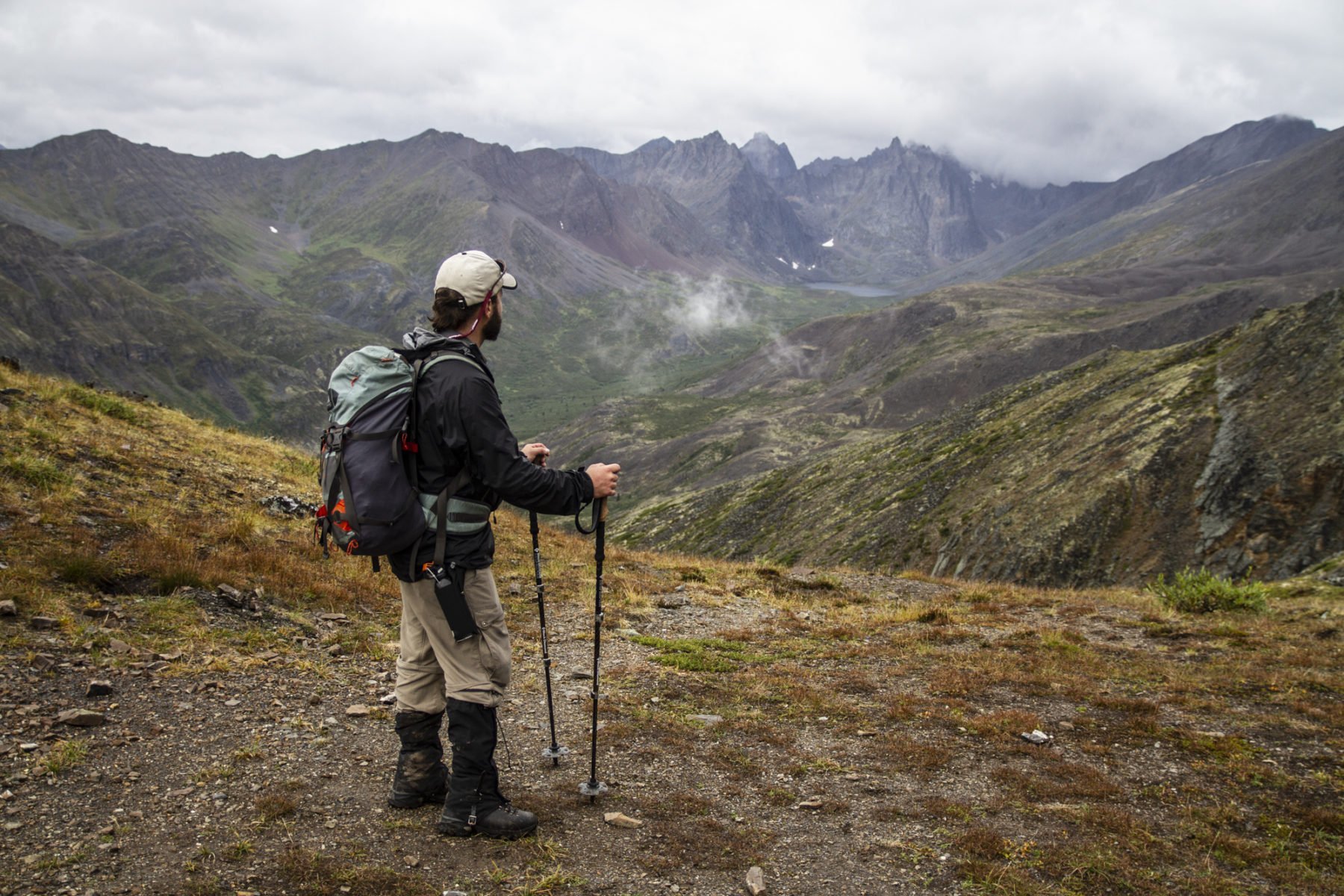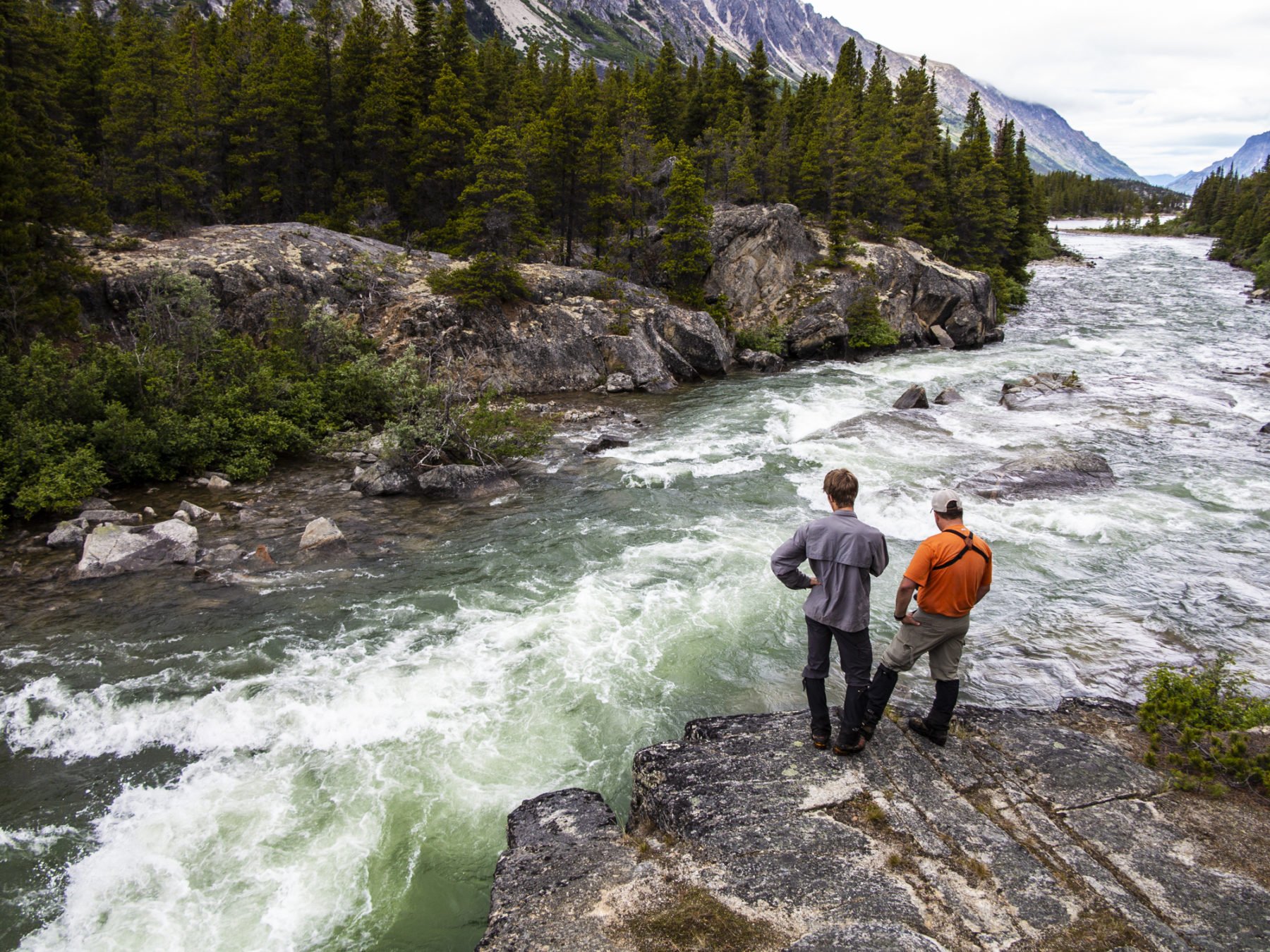Welcome to the Yukon! The Yukon Territory is one of Canada’s northernmost territories, sitting above British Columbia, and to the west of the Northwest Territories. Its northern border is shared with the USA’s Alaska. And it is massive. At 482,443 square kilometres, the Yukon contains an incredibly diverse mix of landscapes, from mountain ranges (including Canada’s highest peak, Mt Logan, at 5959 metres, located in Kluane National Park Reserve) and glaciers, to huge lakes, immense valleys, and a number of large (and famous) wild waterways (including the territory’s namesake river), as well as the Carcross Desert, often described as the world’s smallest desert (and home to some awesome mountain bike trails).
The Yukon is 80 per cent wilderness, which means an abundance of wildlife, including iconic North American species such as grizzly bears, wolves, moose, caribou (the Yukon’s 200,000 Porcupine caribou herd tackles the longest mammal land migration in the world each year), bald eagles and more.
The Yukon’s vast size doesn’t mean it is crowded, either. The sparse population of around 41,800 residents includes 14 First Nations (accounting for 20 per cent of the territory’s population) resulting in a rich and thriving indigenous culture. And, on account of this wilderness to people ratio (the population density is around 0.1 person per square kilometre), there’s a huge amount of space for epic adventures!
Where the wild things are
The Yukon contains some incredible protected areas, including three national parks and eight territorial parks. Among these are some true adventure icons, such as Tombstone Territorial Park in the north-west, Kluane National Park and Reserve in the south-west, and the remote arctic national park in the far north: Ivvavik, nestled alongside the border with Alaska.
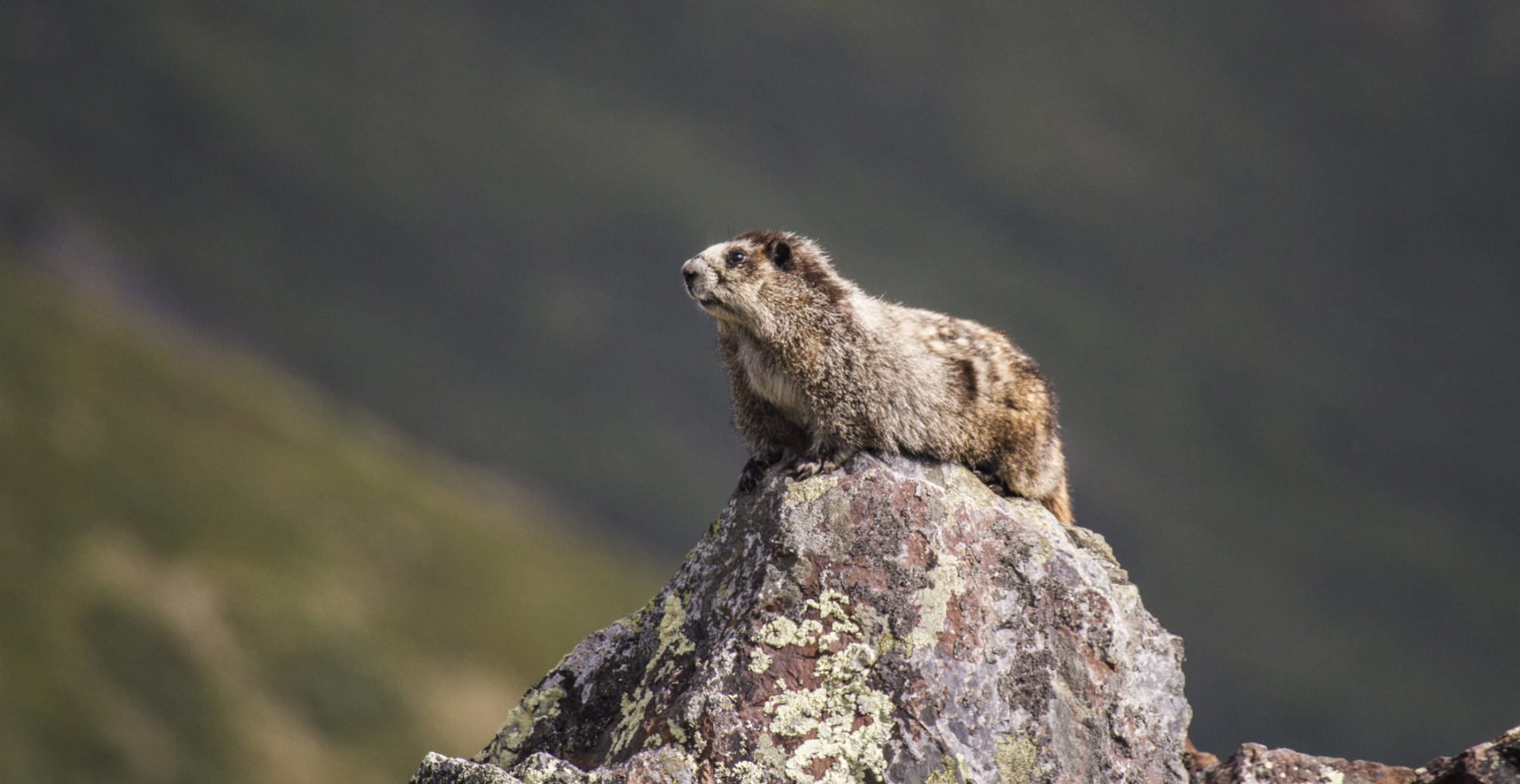
Tombstone Territorial Park, north of Dawson City (and reached via, firstly, the Klondike, then the Dempster Highway, the only public road to cross the Arctic circle) covers more than 2200 square-kilometres. The park’s landscape ranges from boreal forest and high, dramatic mountain peaks in the south (including Tombstone Mountain), through to the contrast of rolling subarctic tundra in the Blackstone Uplands of the north. The altitude here ranges from around 550m in the Chandindu River valley up to the 2350m summit of Mt Frank Rae. The park is crisscrossed by numerous waterways, including the Tombstone, North Klondike, Chandindu, Blackstone and East Blackstone rivers. It is also host to the annual migration of the 120,000-strong Porcupine caribou herd, claimed to be the longest migration of any land animal on Earth. You will find plenty of hiking trails, campsites, rivers to paddle, and wildlife, plus the excellent – and must-visit – Tombstone Interpretive Centre, which showcases the park’s geology and First Nations history.
Only two hours west of Whitehorse, Kluane National Park offers a huge contrast to Tombstone Territorial Park. At Kluane NP you will find Mount Logan (Canada’s highest mountain) and the earth’s largest non-polar ice fields (half of the park’s total landmass is covered in snow and ice). Besides Mount Logan, the park contains 17 of Canada’s 20 tallest peaks. It is also home to the Alsek River (one of the world’s famous rafting waterways) and contains plenty of iconic Yukon wildlife – grizzly and black bears, Dall sheep and bald eagles. On top of this, the park is chock-full of outdoor activities: hiking (day, overnight or multi-day), rafting, mountain biking, fishing, camping and canoeing are all possible here.
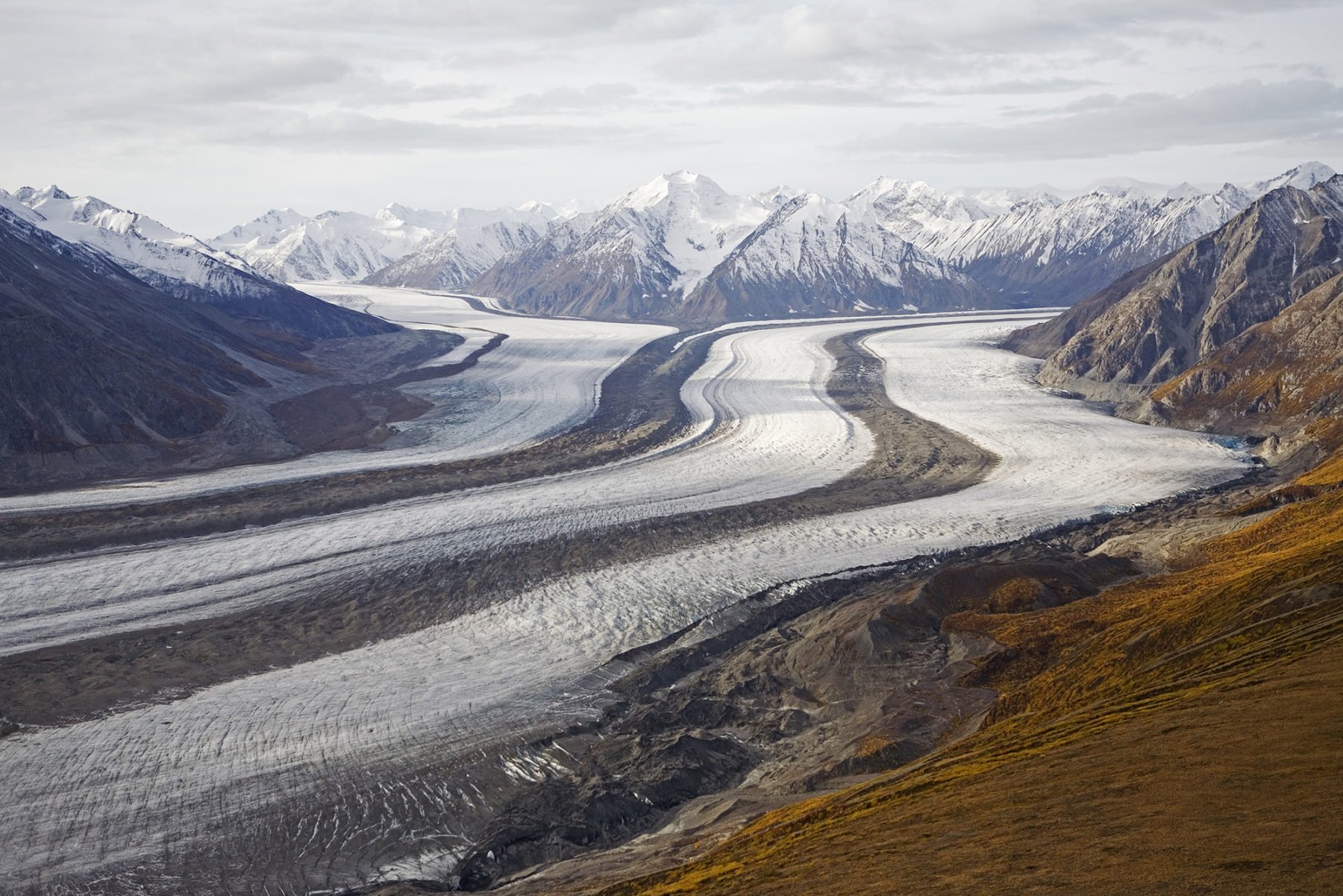
Far more remote (but worth the effort to visit), Ivvavik National Park provides yet another different experience of the Yukon. Ivvavik (the name means ‘nursery’ in Inuvialuit, and refers to the porcupine caribou’s migration from here to their calving grounds further south) is extremely remote – according to Parks Canada, only 100 visitors per year visit the park – and access is via plane to Inuvik. The rewards, however, are worth the small extra effort: the park, a mix of unglaciated arctic tundra and the rugged British Mountains, contains Canada’s oldest river (the 130km-long Firth) that is a cracking rafting location (for the super-keen you can raft all the way from Margaret Lake to the Arctic Ocean, or tackle shorter journeys). The park is – you guessed it – also packed full of wildlife, with grizzly bears in abundance as well as beautiful king eider ducks for birdwatchers to marvel over. It is perfect for both day trips or longer stays – there’s even a unique Arctic base camp at Sheep Creek where you stay in cabins and enjoy day hikes, fishing and plenty more.
Of course, along with the three ‘big’ parks of Tombstone, Kluane and Ivvavik, the Yukon is home to numerous other reserves and protected areas, from historical to cultural to those dedicated to the preservation of unique ecosystems. For visitors looking to learn more and experience the territory’s natural assets, the Yukon has all of that and more, in abundance.
Walk this way
The Yukon is a hiker’s paradise. Whether you’re keen on day hikes with your family alongside the iconic Yukon River, or you wish to tackle the famous multi-day Chilkoot Trail (either with a Whitehorse-based guiding company, or independently), you will never want for walking.
The Chilkoot Trail retraces the route used by, firstly, the Tinglit indigenous people, then by desperate gold-hunters (known as ‘stampeders’) in the late 1800s, lured by the shiny siren call of the Yukon’s Klondike Gold Rush further north. The Chilkoot actually starts across the USA border at Dyea, Alaska (not far from the gold-rush town of Skagway), travelling through coastal forest, before taking you back into Canada, where you then start climbing high above the tree line into starkly beautiful alpine tundra through the Coast Mountains, before crossing the (often snow-covered) Chilkoot Pass (1074m) is a highlight; the crossing entails rock-hopping up its near-vertical pile of massive boulders to the top where, if you are not blown off by the howling winds that can funnel through the pass, you can look back down what you’ve just ascended and wonder how the early prospectors made it – and appreciate their determination. Why so? The prospectors were required by Canadian law to carry with them an Imperial ton of supplies. The reasoning behind this seemingly torturous edict was it lessened the chance of prospectors’ deaths during the harsh long winters. The landscape is sublime, as are the campsites along the trail; most are situated beside a lake (this writer woke up at Lake Lindeman camp to see a moose grazing in the shallow waters), with the finish beside beautiful Lake Bennett, at the end of an unforgettable four days in the wild. Here you can either jump onboard a floatplane back to Whitehorse (guided treks often offer this as part of the trip), or catch the Bennett to Skagway Chilkoot Hiker Service train, on the White Pass and Yukon Route. It’s a great way to see a different part of this beautiful part of the territory.

The Grizzly Valley hike in Tombstone Territorial Park is a must-do day-hike. 
The rapids of Lindeman Creek funnel into the lake of the same name on the last day of the Chilkoot Trail.
Two other brilliant multi-day hikes in the Yukon are found in Kluane National Park. The three-day Slim’s River West Trail, a 64km up-and-back journey through the Slim’s River Valley, that includes a climb up to the top of Observation Mountain for amazing views over the Kaskawulsh Glacier, and its frozen river. The seven-day Cottonwood Trail (available as guided or independent) fully immerses you in the park, with creeks to cross, mountains to trek up and down, and the chance to spot plenty of wildlife (the park has a heavy concentration of grizzly bears, as one example).
As well as these big treks, there are innumerable day hikes throughout the Yukon, suited to all age groups. Some must-dos include the 5km-return Grey Mountain hike, just out of Whitehorse, that offers great lake views, and the 4km Spirit Canyon hike, with canyon views, the Takhini River Valley (more on this river, later) and Ibex Valley. This canyon also offers excellent rock climbing. A final couple of day hike options – this time, in Tombstone Territorial Park – include the Golden Sides Mountain hike, which is a roughly 4km-return amble up a small mountain north of the park’s campground, that offers majestic views back across the valley to 2319-metre Tombstone Mountain itself, looming over the headwaters of the North Klondike River. The other is the equally spectacular Grizzly Valley hike to Ridge Viewpoint. At 8km return, this is a fun day-hike for the family with plenty of ‘up’ being rewarded with an eagle’s view of Grizzly Lake and Mount Monolith in the distance, deeper inside the park.
The truth is, if we had 10,000 words to write about all the hiking options in the Yukon, it wouldn’t be nearly enough, however, the above options certainly qualify as a few highlights among many.
Have paddle, will explore
If there’s an outdoor activity that could be classified as synonymous with the Yukon, it would have to be paddling. The canoe is, of course, a Canadian icon – and the Yukon has myriad rivers and lakes suited to this craft – but there is also plenty of kayaking (both flat and whitewater) and rafting available on a number of rivers, too. It really is a matter of “picking your poison” in terms of finding a waterway (or 10!) that you can paddle your favourite watercraft in. And it all starts with the territory’s namesake river…
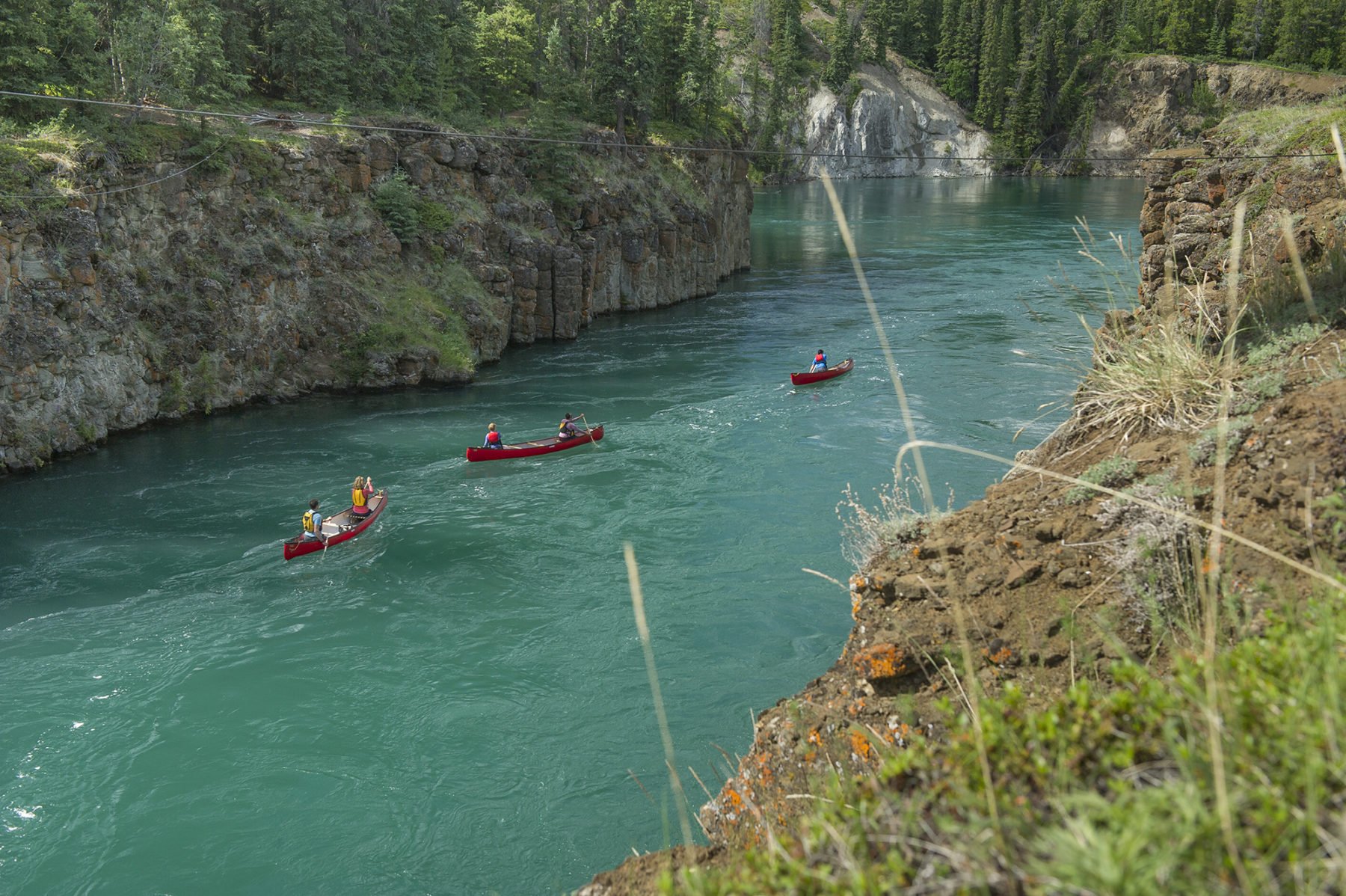
The Yukon River is one of the canoeing world’s most famous bucket-list journeys and, if you have the time, the journey from Whitehorse north to Dawson City, replicating the route taken by the ‘stampeders’ in the Gold Rush era as they rushed to the Klondike goldfields, is simply brilliant. The ‘full monty’ version of this journey takes between 14 and 20 days – and we’d highly recommend going with an experienced guiding company, such as Canadian River Expeditions or Up North Adventures, simply to ensure all the logistics are taken care of and you can just enjoy the paddling on this famous waterway. For those with less time, you can opt to paddle either the Whitehorse to Carcross leg, or the Carcross to Dawson City one. Of course, even a day paddling this famous river is great fun and there are plenty of operators, such as Kanoe People, who provide guided day paddles, or canoe hire for those wishing to tackle the big river independently (with a pick-up and return to Whitehorse at the end of the day). Other longer canoe adventures include the Snake, Wind, Big Salmon, Bonnet Plume and Nisutlin rivers (this last one is popular with families), with journey times ranging from a week to more than 20 days on the water
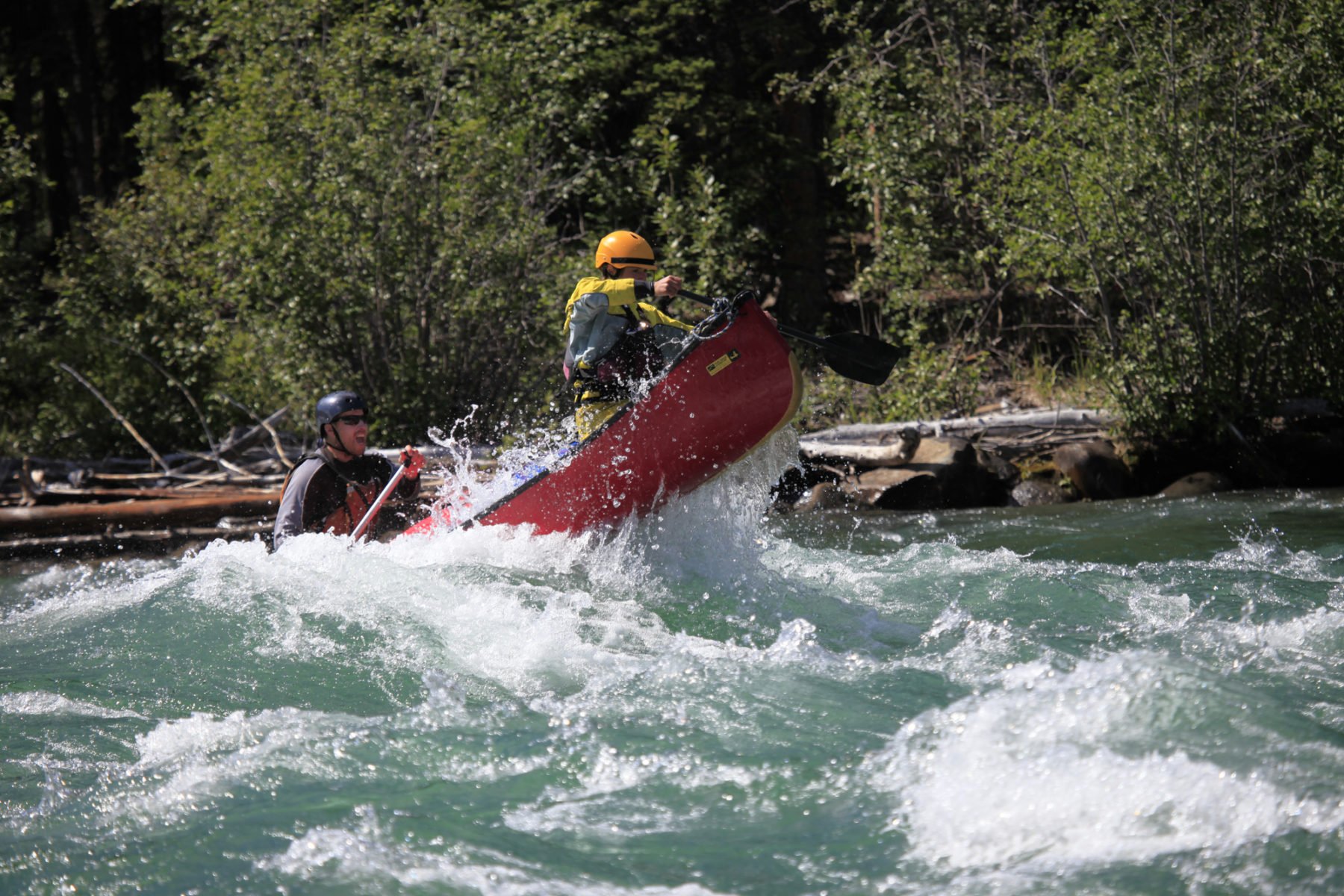
In terms of day trips, along with the Yukon there are a number of other fantastic canoe rivers, such as the Takhini and the Wheaton – both close enough to Whitehorse to enable them being tackled as guided day paddles (Ruby Range Adventures offers this), or independent (Up North Adventures provides the essential gear for more experienced paddlers). Their relative proximity to Whitehorse means you can be back, regaling fellow travellers with your canoe adventure anecdotes that evening, while enjoying a local craft beer and excellent meal.
Whitewater rafting is very popular in the Yukon, with experienced guiding companies offering mix of day and longer trips for visitors, taking paddlers through a wide range of landscapes, from dense forest to arctic tundra. As Travel Yukon itself says, “rafting here is like a waterpark without the lineups”, and that is very true; the number of raft-able rivers, and the vast landscape give you that perfect mix of thrills and the chance to savour the country you are floating through with minimal ‘noise pollution’, equals a win-win for keen paddlers.
The multi-day, guided whitewater adventure on the Tatshenshini River is probably the Yukon’s most famous rafting experience. The Tatshenshini is a Canadian Heritage River (due to its recreational and cultural significance) that flows through the world’s largest bio-reserve as it travels from the Yukon, to British Columbia, before finishing at Alaska and the Pacific Ocean. Yes, it is massive, both in size, the gobsmacking land you float past (think: glaciers, icebergs and wild forest), and the experience itself, with wildlife in abundance and pristine river-side campsites each night. A close second is the Alsek River, which actually joins the Tatshenshini closer to Alaska (Canadian River Expeditions offers a guided rafting adventure that combines both waterways), followed by the contrasting journey to the Arctic Ocean along the beautiful Firth River, passing through arctic tundra on the way to the northern sea.
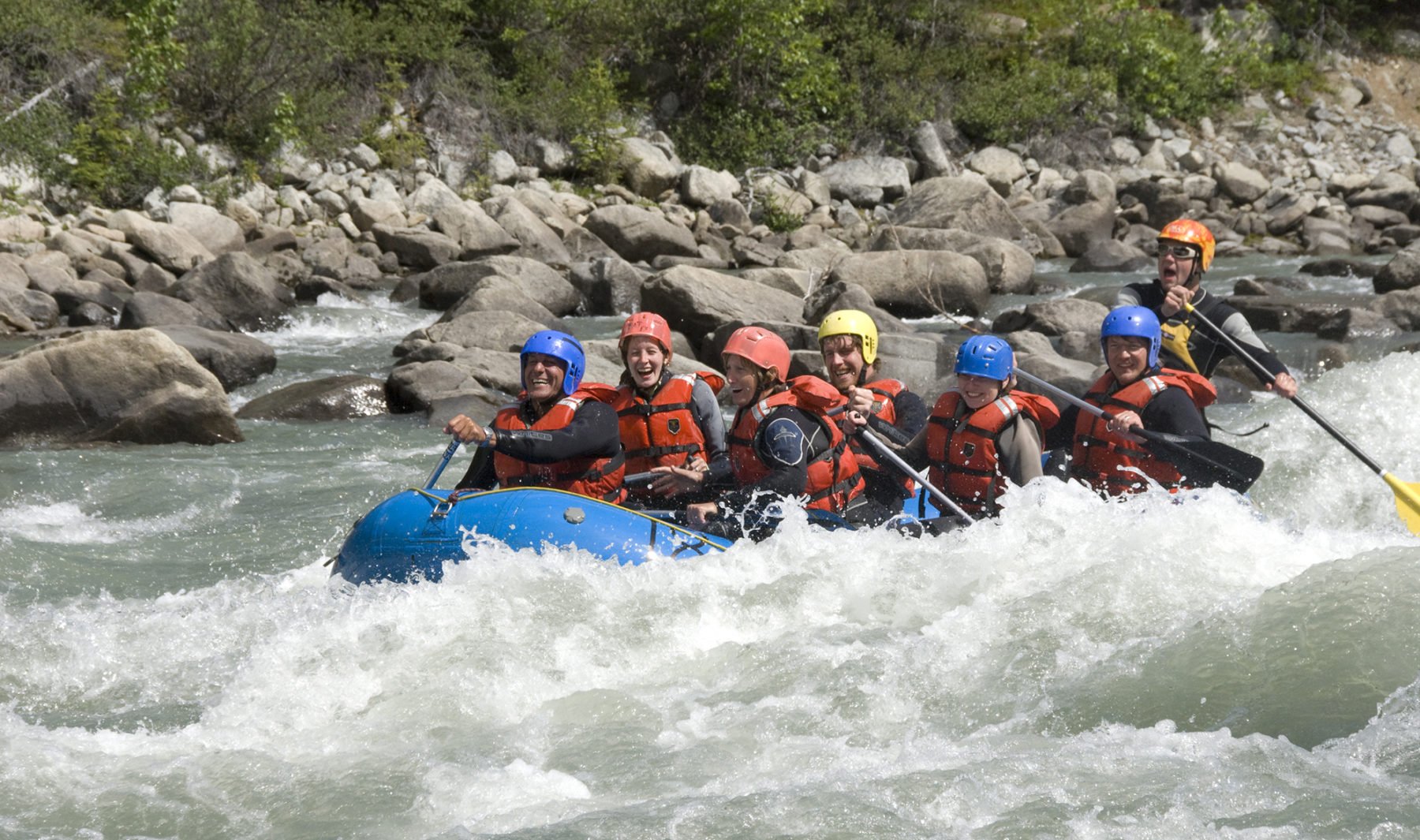
Joel Hibbard, of Canadian River Expeditions, explains the differences – and appeal to visiting paddlers – of the most popular rafting rivers: the Tatshenshini and the Alsek.
“The Tatshenshini and the Alsek, while only a valley apart, are completely different,” Joel says. “The Tatshenshini Valley is filled with lush forest surrounded by towering mountains where the Upper Alsek is still melting out of the last ice age. The Alsek’s powerful rapids mean very few people brave the waters, usually with the company of a team of guides, but it ensures travellers can experience some of the most remote landscapes in North America with only their group.
“To journey from the interior of the Yukon to the coast of Alaska by river also opens travellers eyes to traditional indigenous trade routes and the bold journeys that First Nations made to trade goods.”
You don’t have to spend multiple days on the water to enjoy the iconic Yukon rafting experience, however. A number of guiding outfits offer day-trips along parts of the Tatshenshini, as well as the Liard and, close to Whitehorse (on Skagway Road), the thrill-packed Tutshi, with its journey from tranquil lakes to faster water and then adrenalin-filled runs through rapids inside a river canyon. Rafting company, Tatshenshini Expediting rates it as one of the best whitewater day trips in the world. Yep, we agree; it sounds amazing.
An ageless connection
With 14 First Nations residing in the Yukon – and accounting for 20 per cent of the population – visitors wishing to gain knowledge of the first inhabitants of this territory are spoilt with options, whether that is through immersion in local communities, indigenous artworks, festivals and cultural centres. It is this last – culture – that the Yukon is notably rich and vibrant with, thanks to the First Nations of Yukon’s commitment to showcasing their culture and history and educating visitors through the many cultural centres (see Yukon First Nations Culture & Tourism for extensive info on all things Yukon First Nations).
The cultural centres you will visit in the Yukon are as varied and unique as the 14 First Nations who reside here. From being welcomed by five hand-carved traditional clan poles at the Teslin Tlingit Heritage Centre (right beside Teslin Lake) and then investigating its canoe shed and traditional fish camp before checking out some artwork, through to strolling from your downtown accommodation in Whitehorse to the city’s Kwanlin Dün Cultural Centre overlooking the Yukon River, there are a number of cultural centres to visit.

As well as the cultural centres, there are a number of First Nations festivals and events that, if you’re in the Yukon at the right time, are a must see. The annual Adaka Festival, along with the bi-annual Moosehide Gathering and Ha Kusteya gathering.
In terms of First Nations art, you will find an abundance of it on display and/or for sale in most of the major towns in the territory. Whether it is clothing, woven material, jewellery, paintings or – our favourite – carvings (if you get the chance to, check out the excellent Carcross/Tagish First Nation Carving Centre to see some beautiful works by master sculptor Keith Wolfe Smarch), the First Nations art is a brilliant memento of what is a strong, thriving part of the Yukon to return home with.
A golden history and kissing a toe
Dubbed the “Paris of the North” during the halcyon three years of the Klondike gold rush (1896-99), the town of Dawson City is located at the confluence of the Klondike and Yukon rivers. Originally a First Nations fishing and harvesting camp, the settlement soon grew to a population of 40,000 during the rush as desperate young prospectors (including a certain future author by the name of Jack London) flooded the region in search of instant riches.
Once the gold disappeared, so did the population. Today, Dawson City counts around 1200 permanent residents, but it still thrives as a busy tourist town. The Dawson City Museum is a highlight and there are many famous hotels and buildings that have been fantastically restored, giving give the town a rich ambience of past glories, matched by the Klondike Spirit steamboat that regularly chugs by on the river. And speaking of hotels, for those after a memorable – and quirky – memory of a visit to Dawson City, you must head to the Sourdough Saloon and sample the famous Sourtoe Cocktail. Yes, it’s a preserved human toe, sitting at the bottom of a whiskey glass. To complete the challenge, your lips must touch the toe as you finish the drink, with your reward being named an honorary ‘Sourdough’ (the term used to describe permanent residents of Dawson City). Like we said, memorable and quirky!

The Klondike Spirit retraces part of the route of the ‘stampeders’ of the Klondike Gold Rush era. 
The historic buildings in Dawson City are a brilliant reminder of the town’s halcyon days.
Less quirky, but a must-visit, outside Dawson City you will find a relic of those bygone gold-founded glory days, in the form of Dredge No. 4, North America’s largest bucket-line, wood-hull dredge and, fittingly, located on Bonanza Creek Road. It is a monster: during its years of service, Dredge No.4 could process 1088 metric tons of gravel every hour, 13,732 cubic metres of gravel in 24 hours, and it did so for 240 days a year. These incredible operational figures hint at just how much gold was to be found in the region.
Besides Dawson City and its historical background (plus its mountain biking trails – more on that later), there are a number of other towns in the Yukon that provide a mix of cultural and adventure-based activities. The biggest – and the perfect ‘basecamp’ for your Yukon exploration – is the capital of Whitehorse.
Sprawled beside the mighty Yukon River, Whitehorse has everything you need as a visitor, from being the city you fly into from further afield, to being the base for a lot of outdoor/adventure guiding companies and home to numerous character-filled pubs. Add in excellent eateries, some great book shops and its own mix of First Nations and settler history, and it is easy to spend more than a few days exploring it. The city offers direct access to the Yukon River for paddling, as well as being well catered for in terms of bike paths and, further afield, some excellent mountain bike trail networks. Speaking of which…
On your bike!
Mountain biking has grown in popularity incredibly quickly in the Yukon over the past decade. And, really, it’s not hard to see how that has happened. The territory’s landscape feels like it has been shaped perfectly for mountain biking, with its big mountains, rolling hills, deep valleys and old First Nations and prospectors’ routes providing the base for what is hundreds of kilometres of trails and some amazing trail networks throughout, with a mix of trails for all rider skill levels.
One of the Yukon mountain biking success stories is Carcross. An hour south of Whitehorse, this community has become a global hotspot for mountain biking tourists. This is due to the hard work by members of the community – not the least the local First Nations youth who, through a programme called ‘SingleTrack to Success’ built an amazing trail network on Montana Mountain, just out of town (a 2016 documentary, “Shift” details this great story). The result is a combo of sweet flowing singletrack and trails graded from beginner through to expert. The highlight trail (of many highlights!) is the Mountain Hero Mine Trail, a designed IMBA (International Mountain Bicycling Association) “Epic Ride”. Starting in the subalpine, this trail begins near the historic mine of the same name and drops down the mountain, where loads of fun follows.
Another community MTB success story is found in Dawson City where, again, members of the Tr’ondëk Hwëch’in First Nation youth have banded together to build a cracking trail network – dubbed the Moose Hide Trails – that offer a mix of downhill, enduro and cross-country trails, catering for all rider skill levels again. For the experienced rider, Paydirt and Dome Summit Trail are the picks, but there are plenty more that equal mountain biking’s ethos of being outdoors, having fun, and then celebrating with friends with food and drinks back in town. Check a short teaser video below (and to see the full film, click here).
Don’t think Whitehorse has missed out on the MTB revolution, either. The Yukon capital is surrounded by more than 700km of bike trails, ranging from the beautiful Yukon River Trail for families through to the multitude of trails found at Grey Mountain and Mount McIntyre, two of the main ‘hubs’ of trails surrounding the city. With extensive signposting and links between trails, Grey Mountain is a brilliant few days’ out on the bike, taking riders down steep drops, alongside pristine lakes and up along ridges that provide views across to the Coastal Mountains in the west. Mount McIntyre trails offer subalpine riding with even more knockout views to stop and enjoy, along with some more technical trails if you’re up for a challenge. The best thing about riding any of the trail network hubs surrounding Whitehorse – and yeah, we’ve mentioned this a few times now – is the cool microbreweries and eateries are so close for the end of the day post-ride celebrations. Say no more…

For those who prefer their cycling on the road, the Yukon caters more than very well for you, too. Whether you want to spend a few hours with the family cruising the Millennium Trail in Whitehorse as you explore the city (there’s also the cool Waterfront Trail), or venture further – and longer – on one of the territory’s highways, you’ll find riding in the Yukon easily accomplished. Road loops out and back from Whitehorse are popular here, as are slightly longer road cycling journeys, such as the Southern Lakes Loop that takes you from Whitehorse to pretty Carcross and back again. For the more experienced long-distance cyclist, there is, of course, always the challenge of the mighty 734km Dempster Highway, riding from its junction at the Klondike Highway all the way to the Arctic and Inuvik. Yep, it takes a bit more planning due to its remoteness but, simply put, what a ride it would be; enjoying that vast and always changing landscape, in your own company (besides, no doubt, chance wildlife encounters), with just the sound of your wheels turning on the gravel, would be brilliant.
Going wild
Even just thinking the words “the Yukon” conjures images in your mind of the territory’s iconic wildlife. Grizzly bears, black bears, caribou, moose, lynx, muskox, elk, beaver, wolves, Dall’s sheep, wolverines, eagles… the list of photogenic native fauna is lengthy. And, thanks to the territory being so sparsely populated, it is not that hard to spot any of these in the wild.
For optimum wildlife spotting, going with a guided company is a must. Also worth considering is the time of year, with spring one of the best, owing to the fact bears are coming out of hibernation and the famous Porcupine caribou herd (named after the Porcupine River region near the Beaufort Sea in the Arctic) is on the move, making its way from its winter grounds north before the calving season starts. With more than 220,000 in this herd, it is an incredible sight.
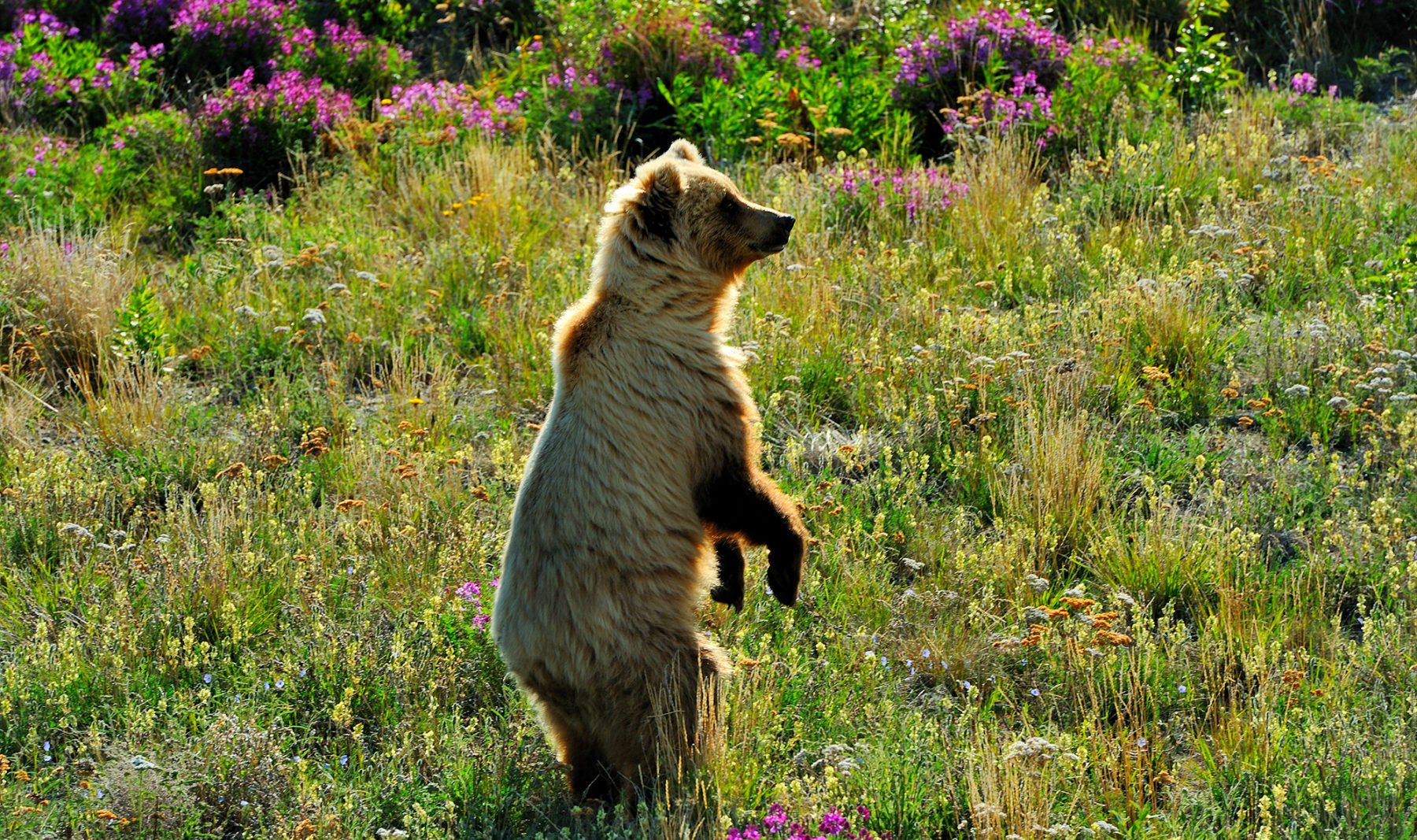
Bear spotting in the Yukon can happen at pretty much any time – and anywhere – so being bear-aware (carry bear spray if on foot/bike, etc.) will ensure any chance encounters will be happy memories. Moose are another iconic Yukon resident, and these can be often seen grazing in shallow sections of rivers or lake edges, as well as in forested areas. Again, and as with any wild animal encounter, maintain a safe and respectful distanced and you’ll reap the reward of an amazing wildlife experience.
For those keen to learn more about the Yukon’s wildlife, the Yukon Wildlife Preserve, around 30 minutes’ drive from Whitehorse, includes a dozen species and offers a brilliant opportunity to both view and learn more about some of the Yukon’s native fauna. It is open all year round.
Your Yukon Territory adventure: all you need to know
At the time of writing, Aussie still cannot travel overseas, but that is actually a huge positive as it allows you time for extensive research and then planning of your Yukon Territory adventure.
Getting there: This may surprise some, but even though the Yukon Territory seems like it is at the ‘ends of the earth’ it is not – and getting there entails a straightforward journey. Flights connecting Australia’s eastern seaboard (the majority from Sydney) to, firstly, Vancouver, and then directly on to Whitehorse mean you will be absorbing the spectacle that is the Yukon in no time at all.
Getting around: The roads and highways in the Yukon are excellent and this, along with the long hours of daylight, mean road trips are brilliant fun here. Signposting is in abundance and very clear, and the Yukoners themselves are overwhelmingly friendly and helpful if you do need to ask for directions or tips on where to eat and stay. One thing: don’t forget Canadians drives on the ‘other’ side of the road to us Aussies. It sounds like a big thing but is not at all.
Weather: The Yukon in spring and summer means long days and short nights – especially in mid-summer and more so in the far north of the territory – which means there’s no rush to cram every day full of adventure; there are, literally, plenty of hours in each day.
Accommodation: As well as the excellent wilderness lodges throughout the territory, the Yukon has options ranging from camping and RV parks and B&Bs, to hostels, hotels, motels, and rentals.
More information: For all things Yukon, see Travel Yukon
Whether it is suggested visitor itineraries, excellent info on the various parts of the territory, ideas for how to plan for a visit, accommodation links, informative blogs or loads more, the Travel Yukon website is brilliant.

